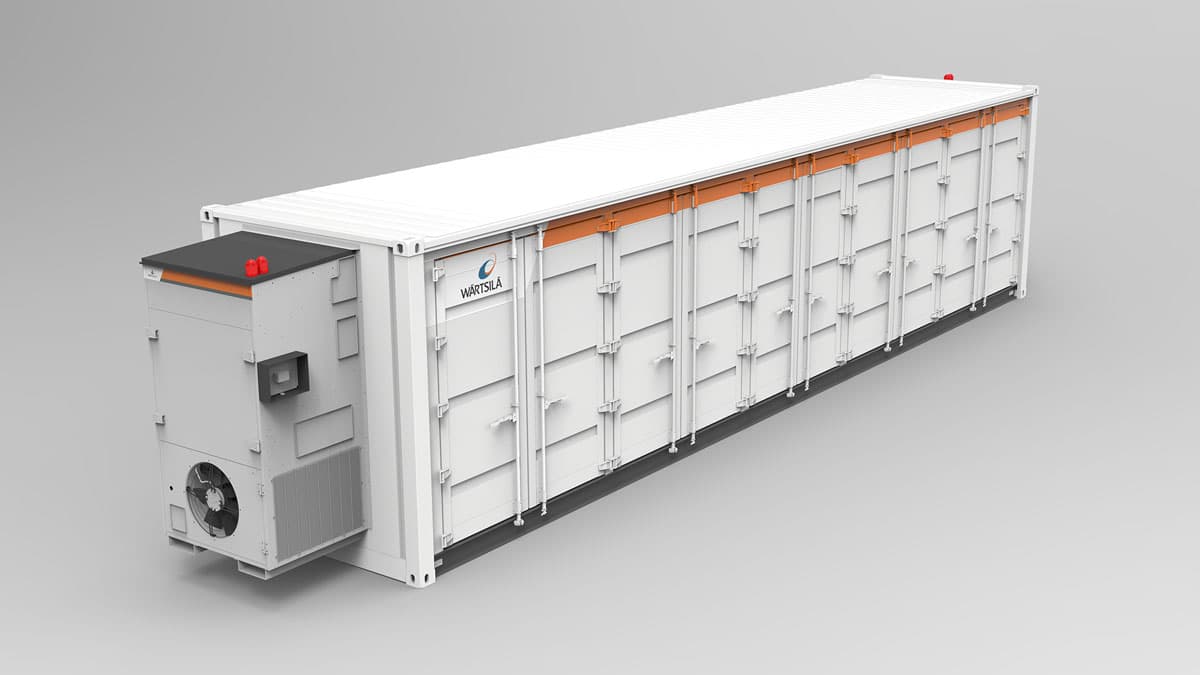Wärtsilä will supply energy storage technology for two projects with a combined rated capacity of 200 MW in south Texas. The Madero and Ignacio plants will provide grid support, including frequency regulation, to the Electric Reliability Council of Texas.
The order was placed by Able Grid Energy Solutions, a utility-scale energy storage project development arm of MAP RE/ES. Wärtsilä has also signed 10-year guaranteed asset performance agreements for the equipment. As part of the deal, Wärtsilä will supply its GridSolv Quantum energy storage technology as well as a management platform to monitor and control energy flow.
The agreement includes maintenance services, an availability guarantee, and a flexible capacity guarantee based on usage. The systems are expected to enter service in January 2022.
Able Grid will provide construction management and asset management services for the facility, which will be owned by an unnamed privately held energy storage power producer.
Interconnection delays
Hawaiian Electric told the state’s utility regulators that it isn’t entirely responsible for delays and rising project costs stemming from current interconnection processes for renewable energy projects. The utility said that “all parties involved in the process”—including developers, their engineers, suppliers, contractors, and permitting agencies—play a role in interconnection delays.
In a filing with regulators, the utility said it had cut five months off its interconnection review timeline and said it looked forward to finding ways to further streamline the interconnection process.
The state’s Public Utilities Commission (PUC) opened a docket into the utility’s interconnection processes, which the PUC said are causing “unnecessary delays and increasing project costs.” The docket called problems “pervasive” across community-based renewable energy as well as utility-scale projects.
Regulators said that the “opacity” of Hawaiian Electric’s current interconnection processes adds to the challenges encountered by project developers. It said the lack of transparency has led to the potential for “significant setback” to the state’s renewable energy goals. In particular, delays could jeopardize the retirement of a 180 MW coal-fired power plant in September 2022 and impact grid reliability on the island of Oahu.
The utility said that the 135 MW Kapolei Energy Storage project is intended to largely replace the coal-fired plant’s power capacity. It said the storage project is still scheduled for commercial operation in June 2022. It said the project’s timeline could slip to the end of that year without affecting reserve margins or grid reliability. However, a project delay past 2022 and up to mid-2023 “would prove more problematic,” the utility said.
Microgrid energy storage
Australian energy storage company Redflow Ltd will supply a 2 MWh energy storage system made up of 192 zinc-bromine flow batteries to Anaergia’s Rialto Bioenergy Facility in San Bernardino County, California, 50 miles east of Los Angeles.
The microgrid project was funded in part by a grant from the California Energy Commission and consists of batteries, a biogas conditioning system to support a 2.0 MW biogas-fueled cogeneration unit, and a microgrid control system. The facility will convert 700 tonnes per day of organic waste and 300 tonnes per day of biosolids into renewable natural gas and Class A fertilizer.
The batteries will supply energy daily from 4-9 pm, during peak tariff period. Under the contract, Redflow will receive more than $1.2 million for the system. Redflow said that while each battery has a rated energy storage capacity of 10 kWh, in practice, each battery stores about 10.5 kWh of energy.
FPL rate request
Florida Power & Light Company filed a four-year request with the Florida Public Service Commission for new base rates that would be phased in beginning in 2022. The filing includes a request for a Solar Base Rate Adjustment mechanism in 2024 and 2025 to recover up to 894 MW of solar projects in each year. If the full amount of new solar capacity is constructed, cost recovery through rates would total $140 million in 2024 and 2025, which would be partially offset by a fuel cost reduction on customer bills.
The plan also includes building what it said would be one of the world’s largest solar-powered batteries and a green hydrogen pilot project.
This content is protected by copyright and may not be reused. If you want to cooperate with us and would like to reuse some of our content, please contact: editors@pv-magazine.com.









By submitting this form you agree to pv magazine using your data for the purposes of publishing your comment.
Your personal data will only be disclosed or otherwise transmitted to third parties for the purposes of spam filtering or if this is necessary for technical maintenance of the website. Any other transfer to third parties will not take place unless this is justified on the basis of applicable data protection regulations or if pv magazine is legally obliged to do so.
You may revoke this consent at any time with effect for the future, in which case your personal data will be deleted immediately. Otherwise, your data will be deleted if pv magazine has processed your request or the purpose of data storage is fulfilled.
Further information on data privacy can be found in our Data Protection Policy.